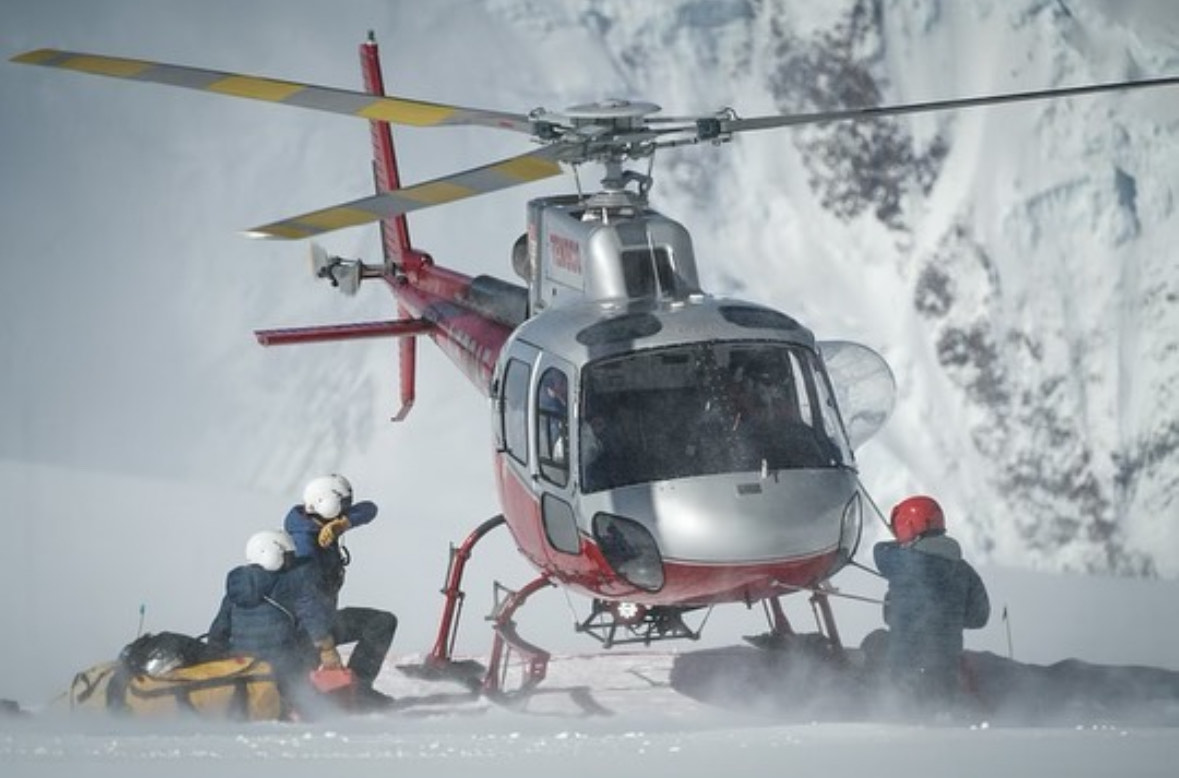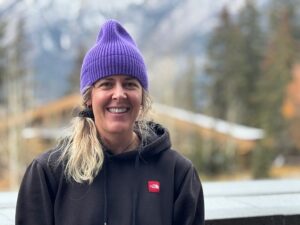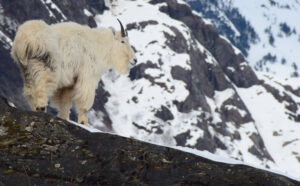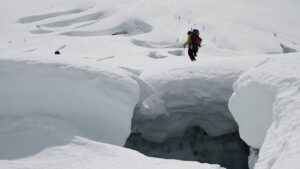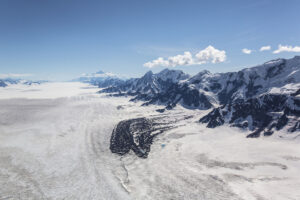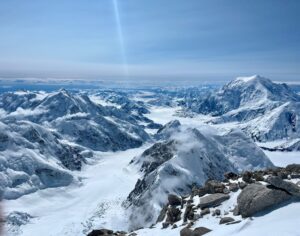Unless something changes, the search-and-rescue team at Alaska’s Denali National Park will be reduced by 50%. Only six rangers will watch over the climbers on North America’s highest peak and over the visitors scattered across 2.5 million hectares of wilderness.
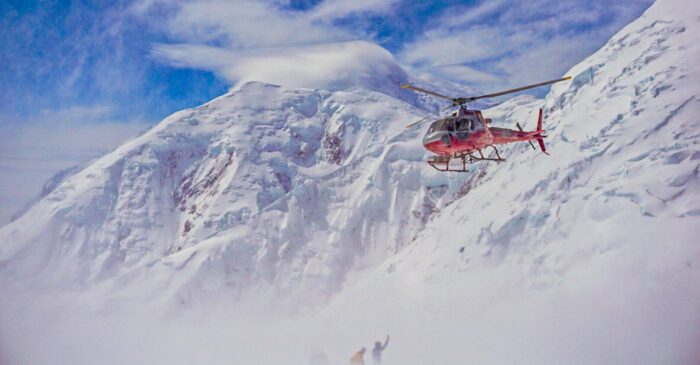
A helicopter approaches climbers needing rescue on McKinley. Photo: Denali Rescue Volunteers/Instagram
The measure is part of the new U.S. administration’s campaign to drastically downsize the government. This includes rescue services in the country’s national parks.
Hiring Freeze
President Donald Trump signed a “Hiring Freeze” executive order on January 20, which stopped the hiring of all Federal civil employees. Like many other national park staff, six of the 12 search-and-rescue members at Denali National Park are seasonal and are typically rehired for each climbing season. This begins in late April and climaxes in May and June before tapering off in early July. Politico quoted reports from these seasonal workers, who were told “they no longer had offers.”
Of the six climbing rangers with permanent positions, two are supervisors who need to stay around the office. This leaves only four rescuers for a mountain that may have over 500 climbers on its busiest days. The Alaska Range also includes many highly technical peaks for skilled alpinists and skiers that may require rescue operations.
Every national park employee received the infamous email from the Office of Personnel Management with the subject line, A Fork in the Road. It promises a few months of salary if they resign voluntarily. About two million U.S. government workers received this email two weeks ago, Fortune reports. The initiative comes from the newly created Department of Government Efficiency (DOGE), spearheaded by Elon Musk.
A slim chance
There remains a slim hope to avoid the decimation of search-and-rescue operations, as the order includes a possible loophole.
“No Federal civilian position that is vacant at noon on January 20, 2025, may be filled, and no new position may be created except as otherwise provided for in this memorandum or other applicable law,” the Hiring Freeze goes.
But it adds that the order does not apply to “positions related to immigration enforcement, national security, or public safety.” Since search and rescue encompasses public safety, therein lies a chance to save the jobs.
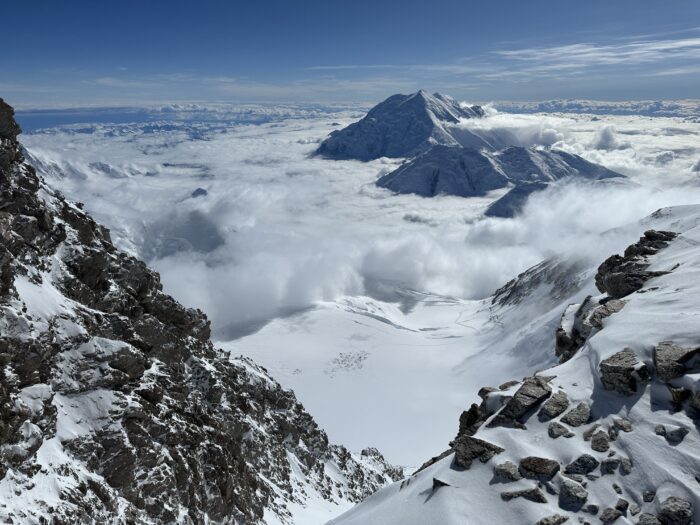
View from camp at 5,240m on Mount McKinley. Photo: Denali Rescue Volunteers Instagram
The Washington Post reports that congressional Democrats and conservation groups, alarmed by the potential risks of critically understaffed national parks with their over 100 million visitors, have asked the Trump administration to exclude law enforcement agents and the search-and-rescue service from the cuts.
In seeking clarity, park rangers are trying to reach higher administration levels. But at the moment, it is not clear who to address because many higher positions in the new administration have not yet been filled.
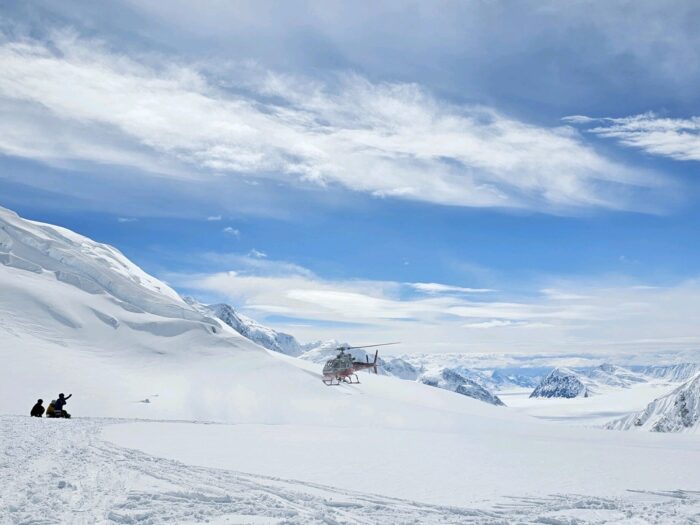
The most welcome sight for injured climbers on Denali. Photo: Denali Rescue Volunteers/Instagram
The order allows the Director of the Office of Personnel Management (OPM) to grant exemptions from this freeze where necessary, but only upon request from the different offices. Meanwhile, the window for this request is quickly closing.
“While public safety positions do fall under an exemption from the hiring freeze, the National Park Service still had to request an exemption and obtain approval to move forward in the hiring process,” a source told The Washington Post.
Uncertainty and lack of time
Recently, U.S. national parks have increasingly relied on seasonal workers and less on permanent employees, despite the fact that the number of visitors has grown dramatically since COVID.
“The amount of full-time park employees in the National Park Service fell 20% between the 2010 and 2023 fiscal years [while] Park visitation rose 16% over that stretch, to 325.5 million,” the Wall Street Journal reported.
At the moment of posting this story, the situation is unclear, and affected workers are anxious.
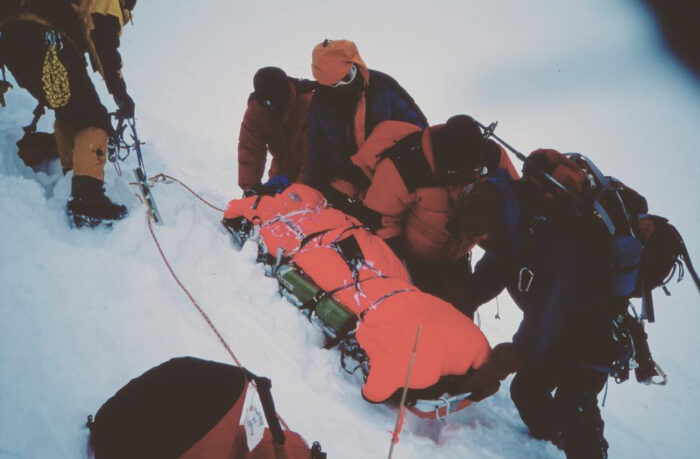
Rescuers help a climber sick with pulmonary edema at 5,250m. Photo: Denali Rescue Volunteers/Instagram
Any stay of execution for those temporary workers has to happen quickly. The Alaska climbing season is almost around the corner. Contracts need to be signed in March, and the hiring process for public jobs is long.
North America’s roof
Denali, recently renamed Mount McKinley, is the best-known landmark in the park (which still goes by the name Denali). At 6,190m, it is the highest peak in North America and one of the Seven Summits. Climbing them all has become a popular mountaineering challenge.
Summiting McKinley is a serious endeavor due to its high altitude, the long distances between camps, the heavy loads, and the harsh weather. During the peak weeks at the end of May and early June, hundreds of climbers flock to the mountain, and rescues are frequent.
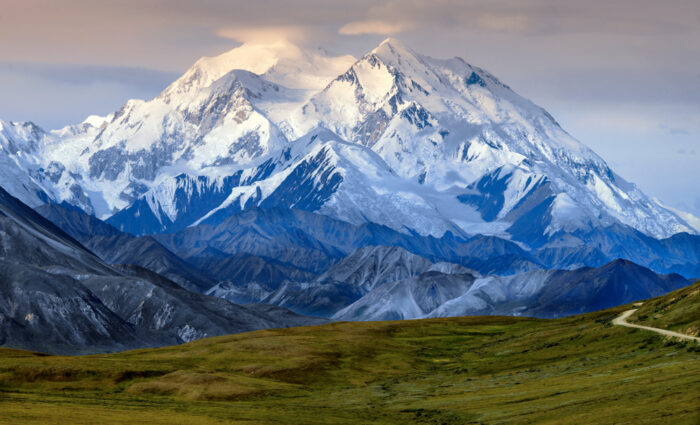
Mount McKinley, in Denali National Park. Photo: Shutterstock
In 2024, Search and Rescue Services attended to 31 injured or sick climbers on Denali’s normal West Buttress route. Two of these died in fatal falls, and another perished from hypothermia. Check the yearly stats here.
The number of interventions increases every year, as does the number of climbers.
The rangers’ role
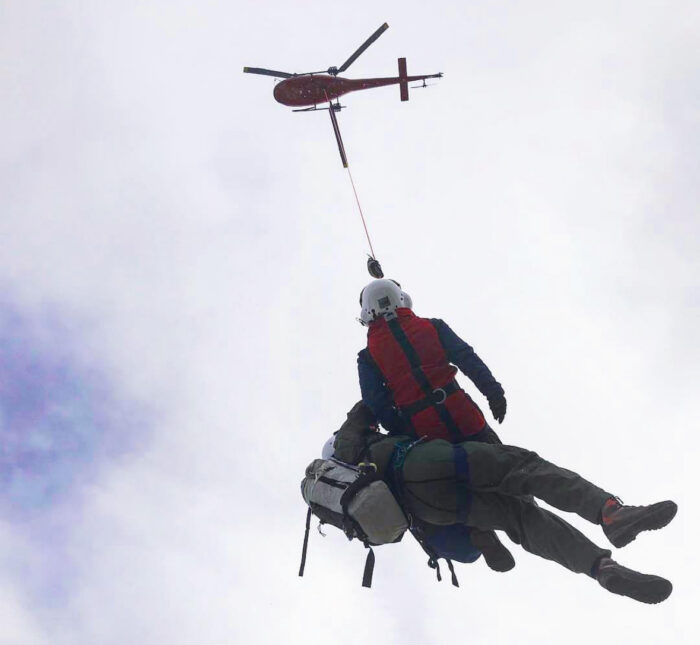
A Denali ranger short-hauling. Photo: Denali Rescue Volunteers/Instagram
The emergency calls usually begin in April, and the work intensifies in May and June. Rangers trade off working in Talkeetna, checking climbers and managing permits, and running 3.5-week high camp patrols on Denali’s West Buttress. They are on call 24/7. High camp patrols spend a week in a medical camp at 4,330m, so they are acclimatized when emergencies occur. The medical camp itself remains in place for two months.
The rangers also rely on a group of volunteers, partly supported by a national fund when they are actively participating in a rescue. Last year, the 12 mountaineering rangers counted on 38 volunteers, who contributed a total of 8,949 hours. It is unclear if the national fund will be active under the new administration.
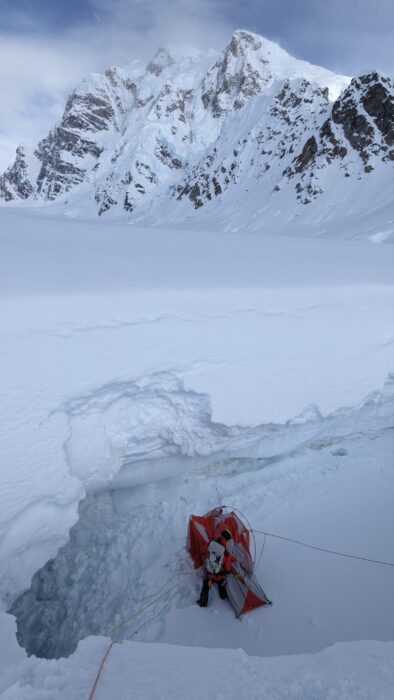
In addition to rescues, the rangers also retrieve trash from the mountain. Photo: Denali Rescue Volunteers/Instagram
The team focuses not only on rescuing but on preventing accidents. They spend time in Talkeetna with each climber who applies for a permit. Then they discuss with the applicant the risks that a Denali climb involves.
On the mountain, they watch over climbers, warning them, for example, if they try to ascend so quickly they risk Acute Mountain Sickness. Rangers worry that this prevention work will lapse if they are short-staffed.
Worst case scenario
A team of 14 rangers is a very small crew for a mountain as popular as McKinley, located in such a hostile environment. Those at Talkeetna have to deal with newcomers and also coordinate when there is an emergency. Volunteers do their best but lack certain skills, such as managing high-angle rescues. And when tragedy strikes, the rangers are the ones who retrieve the bodies.
“With six rangers on staff, the situation would…most likely result in us [having to] leave injured climbers on the hill to either succumb to the elements or rely on the good-will of climbers on the mountain to rescue them,” a source related to Denali search and rescue, who asked to remain anonymous, told ExplorersWeb. “Minor incidents would snowball into truly terrible tragedies.”

Denali’s West Rib from a rescue helicopter. Denali Rescue Volunteers/Instagram
It is unclear how the situation will play out. For now, it is wise to consult the latest information before visiting Alaska’s mountains or any U.S. national parks.
